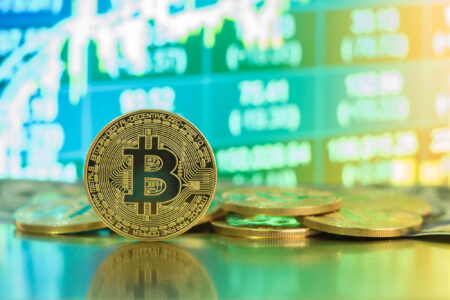A monthly review of what's happening in the crypto markets enriched with institutional research on the most important topics in the industry in cooperation with the Swiss digital asset specialist, 21Shares AG.
July was a robust month for Bitcoin, which benefited the long tail of cryptoassets. While there is a sea of factors contributing to this performance some credit could go to an Amazon rumour that was promptly denied about the e-commerce giant accepting Bitcoin as a method of payment.
Rumors around Amazon trigger short squeeze
Nevertheless, Amazon is hiring digital currency and blockchain talents, so there’s more to it than just a rumour. In fact, this news item disturbed the market infrastructure:
- Over 1 billion USD in total short liquidations in what appeared to be a foreseeable short squeeze. Futures open interest increased by 1.4 billion USD the week prior to the rumour, especially in tandem with the recent rally in prices.
- 71.7% of the selling pressure came from traders who invested in BTC in the past 6 months in the spot market.
- Though the options market for Bitcoin is noticeably smaller than the futures market, options traders overly bet on call strike prices out of the 30'000 USD to 40'000 USD range, at 80'000 USD per bitcoin for August 27th. It is a testament to the more positive sentiment amongst derivatives traders enthusiastic about an uptrend going forward.
At 21Shares, we expect the price of Bitcoin to consolidate in the 35'000 USD to 40'000 USD trading range in the foreseeable future. Conversely, Ethereum has the chance to experience a significant uptrend. We believe the Ethereum upgrade EIP-1559 will boost demand for ETH (11% MoM growth) and feed the narrative of ETH as a scarce commodity asset serving as a fuel for the Defi and NFT ecosystems.
In other news, on the tech front, the Bitcoin network broke a new record in terms of difficulty adjustment; falling by almost 28%. As we explained in our previous article, this difficulty adjustment refers to the ease of mining Bitcoin expressed in computing power known as hash rate. A decline in difficulty means that the mining competition has become arduous for miners to settle transactions in the required 10-minute period. Hence, the algorithm rebalances the difficulty roughly every 2'016 blocks, or in other words, two weeks, to make mining a fair competition based upon the aforementioned protocol rule.
Binance faces regulatory crackdown
Binance found itself cornered by various financial regulators in the world. Including the United Kingdom, Japan, the Canadian province of Ontario. For instance, within the UK, the financial conduct authority has issued a verdict asserting that Binance Markets Limited – the British division of the exchange – is banned from carrying out any regulated activities within the nation. Moreover, Binance was also clamped down by authorities in Malaysia, the Cayman Islands, and Thailand.
The company took the regulatory pressure quite seriously as they went on a hiring spree focused on a talent base with legal background. They are also seeking another CEO with a regulatory background to replace Changpeng Zhao (CZ) for the global entity. Additionally, the US subsidiary of Binance is planning to IPO. As this process is in the early stages, we expect it to be happening sometime in mid-2022 onward.
Leader of the spot and futures markets, Binance lost 77% of its daily trading volume partly due to the latest China ban waning speculation by wiping out hundreds of billions of dollars in trading volume. However, we don’t expect the trading volume to reach new highs anytime soon for various reasons:
- Regulatory scrutiny grows in light of the comment of SEC Chair Gary Gensler on the requirement for both centralized and decentralized crypto services to comply with US securities laws. Therefore, restrictions or delisting of cryptoassets deemed unregistered securities for US customers might be applied by Binance. In the same vein, Uniswap, the leading decentralized exchange within DeFi, removed such security tokens from their interface (not the protocol itself) owned by Uniswap Labs, their company registered in the US.
- Binance recently limited the leverage level to 20x instead of over 100x and ceased margin trading on various fiat currencies such as the Euro, Australian dollar, and the British Pound. The exchange even winded down their derivatives offerings in three European countries. As such, we should anticipate speculation to diverge to crypto-native derivatives products within DeFi such as dYdX and Perpetual Protocol.
- Lastly, government officials around the world have raised concerns about stablecoins, including Chairman Powell of the Federal Reserve. On that note, potential restrictions on stablecoin trading could significantly plummet trading volume across the board as they serve as an instant onramp to access cryptoassets.
From crackdown to renewables
In its recent and ongoing crackdown on Bitcoin, China drove the most significant market crash in Bitcoin’s history, leaving Chinese miners with no option than to go offline and out altogether. Bitcoin finished Q2 with the worst quarterly performance of -38.8% amongst the top 5 cryptoassets by market capitalization. As we predicted a year ago, this accelerated the paradigm shift of Bitcoin mining to North America and to a lesser extent Western Europe.
China’s war on Bitcoin sparked conversations dismantling mainstream narratives demonizing the cryptocurrency. In the B-Word conference aired on July 21st, Nic Carter, co-founder of blockchain data aggregator Coin Metrics, mentioned that energy spent on Bitcoin mining in China represented 0.7% of the republic’s total consumption. Carter revealed that miners consume 0.26% of the world's electricity production.
Nevertheless, the talk about shifting to renewable energy was heavily discussed by the likes of ARK’s Cathie Wood, Tesla’s Elon Musk, Square’s Steve Lee, and Jack Dorsey who all agreed that the combination of solar and wind plus stationary storage would be an efficient renewable energy replacement. We can see a not-so-distant future where Bitcoins are mined on renewable energy; daring to say that this is the only way the industry could move forward.





